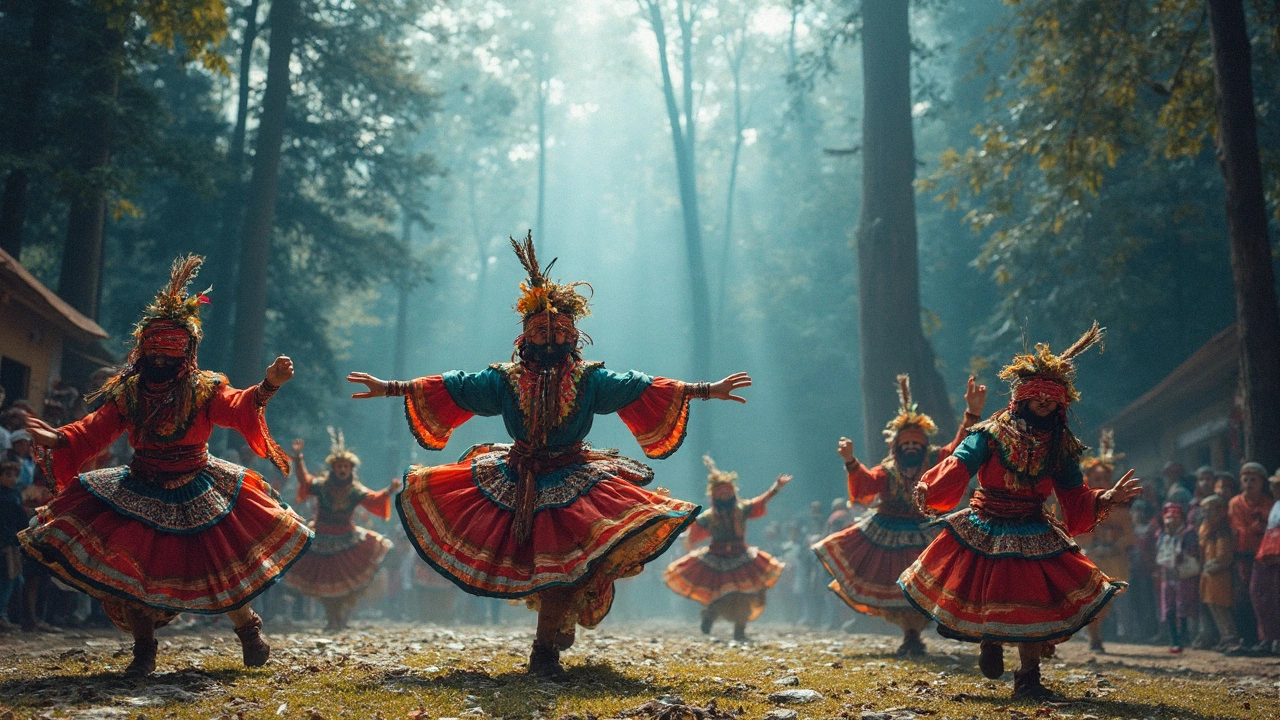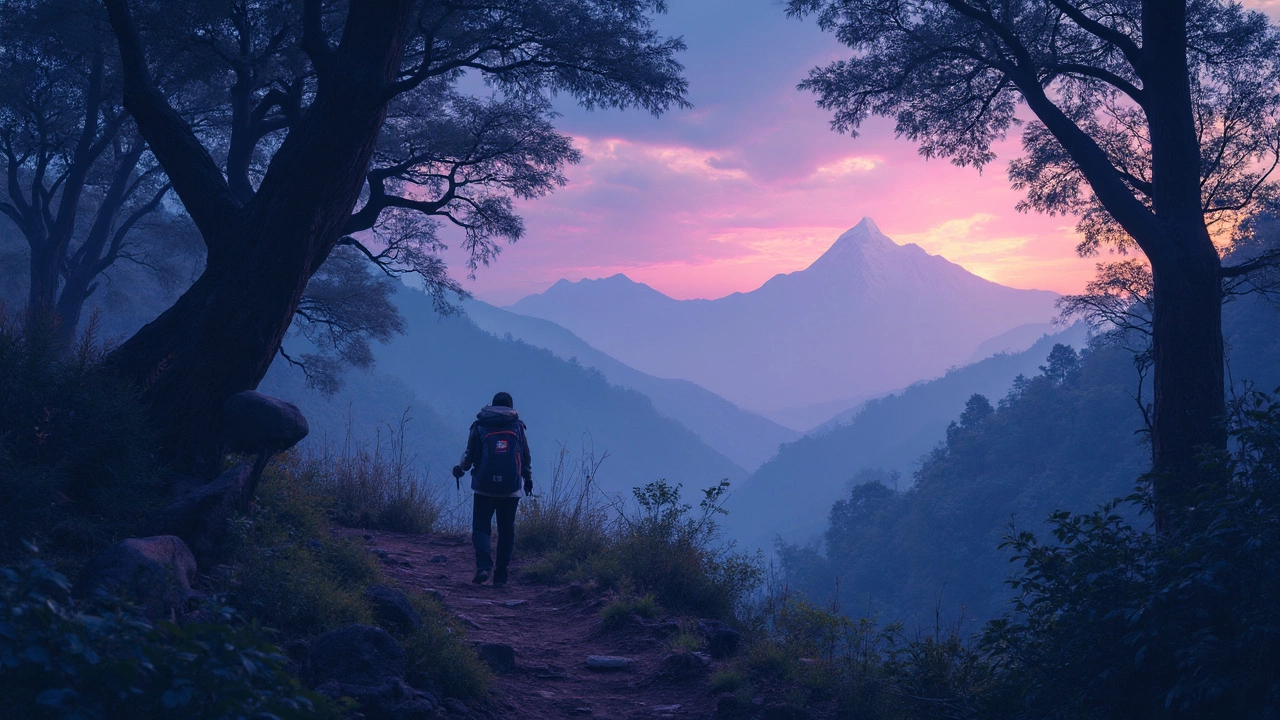Imagine a place where nature's breathtaking beauty meets cultural history. That's what you'll find in India's only mixed World Heritage site, the Khangchendzonga National Park. Nestled in the state of Sikkim, this park offers a unique blend of rugged altitudes, picturesque valleys, and deep-rooted cultural tales.
Why's it called a 'mixed' site, you ask? It's because it meets the criteria for both natural and cultural significance, something quite rare. You see, it’s not just about stunning landscapes but also the myths and spiritual beliefs that have shaped the lives of the local people for centuries.
If you're planning a visit, pack for a diverse experience. The park isn't just for nature lovers but also for those captivated by stories and traditions. From sacred mountains like Mount Khangchendzonga to quirky legends that surround the place, there’s plenty to keep you enchanted. So, whether you're an adventurer or a culture enthusiast, this is one spot you shouldn't miss.
- Introduction to Mixed World Heritage Sites
- Khangchendzonga National Park: An Overview
- Natural Wonders Await
- Cultural Significance and Myths
- Travel Tips for Visitors
Introduction to Mixed World Heritage Sites
When you hear ‘mixed World Heritage sites,’ you might wonder what that even means. Well, it's not just a buzzword. These places are special because they offer both natural and cultural treasures, all wrapped up in one. Under UNESCO, a mixed site showcases globally significant biodiversity and offers cultural value. Yep, it’s like hitting the jackpot of heritage recognition!
An example at home? The Khangchendzonga National Park in Sikkim. It was recognized as a mixed site in 2016, and this badge of honor isn’t just handed out to any location. The criteria are pretty tough, and a site needs to show off something remarkable in both fields. Think of majestic mountains, rare wildlife, unique flora, and age-old local legends—all rolled into one destination.
Only 39 sites worldwide have this status as of now. Imagine that! This makes them hotspots for travelers who crave a double dose of awe-inspiring landscapes and deep-rooted historical experiences. It’s like two holiday experiences for the price of one, where you can explore both untouched nature and centuries-old traditions.
So, whether you’re into hiking through pristine valleys or soaking in cultural stories that have stood the test of time, mixed World Heritage sites offer something exceptional. They’re like an open book where every page reveals a new layer of discovery and enjoyment.
Khangchendzonga National Park: An Overview
Located in the mystical lands of Sikkim, the Khangchendzonga National Park is a treasure trove of natural beauty and cultural heritage. Covering an area of around 1,784 square kilometers, the park is a haven for biodiversity, featuring a mix of temperate and sub-tropical ecosystems. It's not just the sprawling landscapes that catch the eye but also its status as a UNESCO World Heritage site due to its blended natural and cultural values.
The heart of this park is dominated by the mighty Mount Khangchendzonga, the third highest peak in the world, towering at a staggering 8,586 meters. This isn't just a mountain for locals; it's spiritually significant, believed to be the abode of gods and spirits. The surrounding picturesque valleys, glaciers, and rivers form a breathtaking backdrop that makes it a hotspot for trekkers and travelers.
But Khangchendzonga is more than just its landscapes. Its cultural tapestry is as diverse as its flora and fauna. The park incorporates ancient myths and legends of the Sikkimese people, especially those of the indigenous Lepcha community. These soulful traditions are interwoven with the natural features, making the park a living museum of culture and biodiversity.
Visiting this park in India provides a peek into the symbiosis between nature and human heritage. It’s enthralling to see how locals continue to uphold their age-old traditions while respecting the natural world that surrounds them.
If you're planning a trip, make sure to check out key areas like the Yuksom and Tholung Monasteries, which hold historical and spiritual significance. Plus, it's good to know the park management takes conservation seriously, ensuring that this mixed World Heritage site remains pristine for generations to come.

Natural Wonders Await
One of the undeniable highlights of the Khangchendzonga National Park is its incredible natural beauty. It's like the place has a mind of its own, displaying everything from snow-covered peaks to mysterious dense forests. Topping the list of attractions is Mount Khangchendzonga, the third highest peak in the world. Standing tall at 8,586 meters, this majestic mountain is a dream come true for trekking enthusiasts.
But hey, it’s not just about the lofty peaks. The park also boasts stunning glaciers, lush green valleys, and diverse flora and fauna. Birdwatchers, you're in for a treat here with over 300 species of birds calling this place home. The park's biodiversity is just mind-blowing. You might even spot some rare and exotic creatures like the snow leopard and the red panda if you’re lucky!
Its complex ecosystem offers a unique experience every season. If you visit during spring, you'll find the park's rhododendron forests come alive with vibrant colors. In case you're more of a numbers person, here's the thing: a whopping 30% of India's biodiversity can be found right here in this park, making it a haven for nature lovers.
- Trekking Trails: There are several routes for all levels of trekkers, ranging from easy to challenging pathways.
- Best Time to Visit: Late March to May or September to November, when the weather is perfect for exploring.
- Must-see Spots: Green Lake, Tsokha, and Yuksom are popular stops with amazing views.
And trust me, if you're armed with a good camera, you'll definitely want to capture the mesmerizing sights. Just remember, while the views are irresistible, stay on the marked trails to keep yourself and the wildlife safe!
Cultural Significance and Myths
The Khangchendzonga National Park isn't just famous for its natural beauty; it’s deeply embedded in the cultural fabric of Sikkim. This region holds immense spiritual meaning for the indigenous Lepcha and Bhutia communities. They see the towering peak of Mount Khangchendzonga as a guardian deity, protecting and watching over the land.
This connection goes beyond just reverence—it's woven into their daily life and culture. Local myths tell tales of mountains serenading the clouds and sacred lakes that lead to otherworldly realms. One famous legend shares how the five treasures of the great snow (Salt, Gold, Turquoise, and Sacred Scriptures) lie hidden within the mighty mountain, waiting to reveal themselves to a worthy soul during desperate times.
The park also plays a crucial role during traditional festivals. The Pang Lhabsol festival, for instance, honors the mountain deity, bringing communities together for prayers and celebrations. It’s a perfect example of how spiritual and environmental elements come together in harmony.
If you’re visiting, immerse yourself in these cultural narratives by engaging with local guides who have grown up hearing these riveting stories. They can take you to places like the Yuksom, which is not just a beautiful spot but also the site where the first king of Sikkim was crowned. This makes every trek within the park not just an exploration of nature but a journey through living history.

Travel Tips for Visitors
Heading out to explore the mixed World Heritage sites in India is an adventure you won't want to miss. Khangchendzonga National Park is not just any park; it's a blend of natural beauty and rich cultural past. Whether you're here to hike, soak in culture, or a bit of both, here's how you can make the most of your trip.
First off, get ready for some unpredictable weather. Mountains mean one thing for sure: layers! Pack clothes for all kinds of conditions. You might start your day under the bright sun and end it with a chill breeze that sneaks up on you. Think of packing light, versatile clothing that you can layer.
Next, if you’re the adventurous type, ensure your trekking boots are sturdy. Many trails here offer stunning views but can be challenging. Don’t hesitate to hire a local guide; they know the terrain and can share fascinating stories about the park's cultural significance.
Keep your camera ready, especially for sunrise and sunset moments – they’re Instagram gold! And, if you're a keen photographer, a wide-angle lens will help capture the grandiosity of peaks like Mount Khangchendzonga.
For those interested in culture, visit the sacred sites and monasteries dotted around. Be respectful of local customs and maybe even join in a local festival if your timing is right.
- Best time to visit: March to May and September to December when the weather is usually nicer and the flowers are in full bloom.
- Entry passes: Make sure you have your permits in advance. It’s required by the government to preserve the park's environment.
- Accommodation: Options range from budget lodges to eco-resorts. Booking ahead is smart, especially during peak seasons.
Here's a fun fact: Khangchendzonga is home to incredibly diverse flora and fauna. Keep an eye out for the red panda – it's not just a cartoon character but a real inhabitant of these parts!
Visiting World Heritage sites like this one offers more than just pretty views. It's about immersing yourself in the stories and spirits that have shaped the area. So, pack wisely, respect the landscape, and embrace the mix of nature and tradition this unique destination offers.
